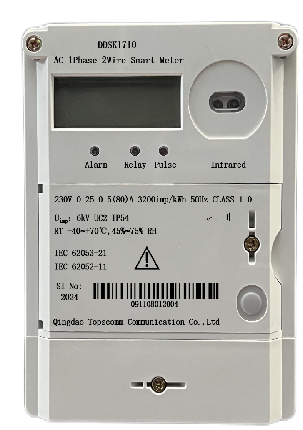Understanding the Revolutionary Impact of Advanced Metering Infrastructure on Power Grids
The energy sector is undergoing a profound transformation, with AMI systems leading the charge toward smarter, more efficient power distribution networks. These sophisticated metering solutions represent a quantum leap from traditional meter reading methods, offering utilities and consumers unprecedented control over energy consumption and distribution. As power grids become increasingly complex and demand continues to grow, AMI systems emerge as the cornerstone of modern grid management and operational efficiency.
The integration of AMI systems into existing power infrastructure has become a critical step for utilities aiming to modernize their operations and meet the evolving demands of the energy marketplace. These advanced systems not only streamline meter reading processes but also provide real-time data analytics, enabling better decision-making and resource allocation across the entire power distribution network.
Core Components and Architecture of Modern AMI Solutions
Smart Meters and Communication Networks
At the heart of AMI systems lie smart meters, sophisticated devices that capture detailed energy consumption data at regular intervals. These meters are equipped with two-way communication capabilities, allowing them to both send and receive information. The communication infrastructure typically consists of multiple layers, including neighborhood area networks (NANs) and wide area networks (WANs), ensuring seamless data transmission between endpoints and central management systems.
The robustness of these communication networks is paramount, as they must handle massive amounts of data while maintaining security and reliability. Modern AMI systems utilize various communication protocols, from power line communication (PLC) to cellular networks, depending on geographical and operational requirements.
Data Management and Analytics Platforms
The true power of AMI systems lies in their ability to process and analyze vast amounts of meter data. Advanced analytics platforms transform raw consumption data into actionable insights, enabling utilities to optimize grid operations, detect anomalies, and forecast demand patterns with unprecedented accuracy. These platforms employ sophisticated algorithms and machine learning techniques to identify trends and patterns that would be impossible to detect through traditional metering methods.
Integration with existing utility systems, such as customer information systems (CIS) and outage management systems (OMS), creates a comprehensive operational view that enhances decision-making capabilities across all levels of the organization.

Operational Benefits and Performance Improvements
Enhanced Grid Reliability and Maintenance
AMI systems revolutionize grid maintenance by enabling predictive and preventive approaches to equipment upkeep. By continuously monitoring power quality parameters and equipment health indicators, utilities can identify potential failures before they occur, significantly reducing downtime and maintenance costs. This proactive approach to grid management has been shown to improve system reliability by up to 50% in some implementations.
The real-time monitoring capabilities of AMI systems also enable faster response to outages and other grid disturbances. Utilities can pinpoint problem areas with precision, dispatching crews more efficiently and reducing restoration times dramatically.
Demand Response and Load Management
One of the most significant advantages of AMI systems is their ability to facilitate sophisticated demand response programs. By providing detailed consumption data and enabling two-way communication with customers, utilities can implement dynamic pricing strategies and incentive programs that encourage off-peak usage. This capability helps flatten load curves and reduce peak demand, resulting in more efficient grid operation and reduced need for expensive peaking power plants.
The granular data provided by AMI systems also enables utilities to better understand consumption patterns and implement more effective load management strategies. This understanding leads to improved resource allocation and more accurate long-term planning decisions.
Advanced Forecasting and Planning Capabilities
Energy Consumption Prediction Models
AMI systems enable the development of sophisticated energy consumption prediction models that take into account numerous variables, including weather patterns, historical usage data, and demographic information. These models help utilities anticipate demand fluctuations with greater accuracy, allowing for better resource planning and more efficient grid operation.
The integration of artificial intelligence and machine learning algorithms with AMI data has pushed the boundaries of forecasting capabilities, enabling utilities to predict consumption patterns days or even weeks in advance with remarkable accuracy. This enhanced forecasting ability has profound implications for energy trading, grid stability, and renewable energy integration.
Infrastructure Investment Planning
The wealth of data provided by AMI systems transforms the way utilities approach infrastructure investment planning. By analyzing detailed usage patterns and grid performance metrics, utilities can make more informed decisions about where and when to upgrade infrastructure. This data-driven approach helps optimize capital expenditure and ensures that investments deliver maximum value to both the utility and its customers.
AMI systems also provide valuable insights into the impact of distributed energy resources (DERs) on grid operations, helping utilities plan for the integration of renewable energy sources and energy storage systems more effectively.
Frequently Asked Questions
What makes AMI systems different from traditional metering?
AMI systems differ from traditional metering through their ability to provide two-way communication, real-time data collection, and advanced analytics capabilities. Unlike conventional meters that require manual readings, AMI systems automatically collect and transmit data, enabling immediate access to consumption information and remote operation capabilities.
How do AMI systems contribute to renewable energy integration?
AMI systems facilitate renewable energy integration by providing detailed data about grid conditions and power flows, enabling utilities to better manage the variability of renewable sources. They help in predicting generation patterns, balancing supply and demand, and optimizing the distribution of renewable energy across the grid.
What security measures protect AMI systems from cyber threats?
AMI systems incorporate multiple layers of security, including encryption protocols, secure authentication mechanisms, and regular security updates. Utilities implement comprehensive cybersecurity frameworks that include network segregation, intrusion detection systems, and continuous monitoring to protect against potential threats and ensure the integrity of meter data.







